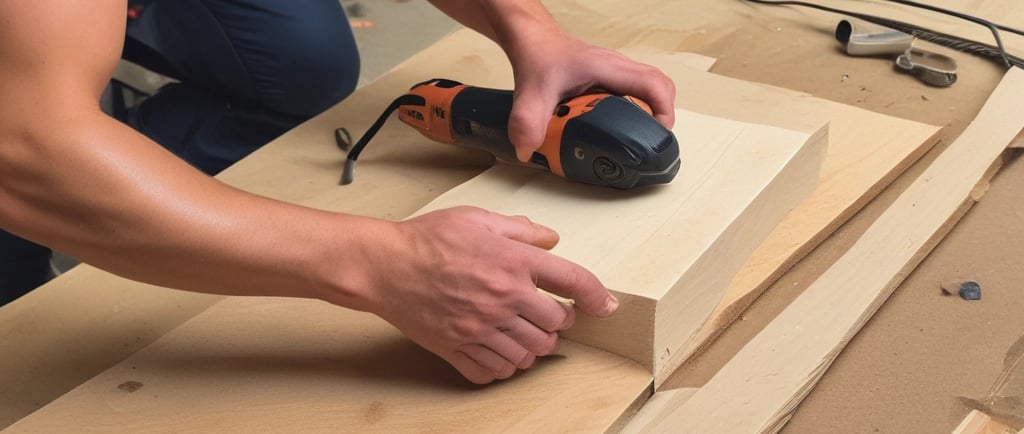Understanding the Basics: What Makes a Good Power Tool?
GENERAL BLOG
11/2/20254 min read


Essential Features of Power Tools
When evaluating power tools, it is crucial to understand the essential features that contribute to their effectiveness across a variety of tasks. Power rating is one of the primary indicators of a tool's performance and capability. Typically measured in amps and volts, higher power ratings often result in more robust tools capable of handling demanding projects. For instance, a drill with higher amperage can deliver better torque, allowing it to make quick work of tough materials.
Additionally, the durability of construction materials plays a significant role in the longevity and reliability of power tools. Tools made from high-quality metals or reinforced plastics are more likely to withstand heavy use and resist wear and tear over time. This durability is particularly important for professionals who rely on their tools for daily tasks, as it minimizes the likelihood of equipment failure and the costs associated with repairs or replacements.
Ergonomics is another fundamental feature to consider in power tools. A well-designed tool promotes comfort during prolonged use, which can reduce fatigue and increase productivity. Features such as cushioned grips, balanced weights, and adjustable handles are essential for ensuring users can operate their tools effectively and without strain. For both professionals and DIY enthusiasts, ergonomic design can make a significant difference in efficiency and overall satisfaction with the tool.
Lastly, safety features cannot be overlooked. Good power tools are equipped with safety mechanisms such as blade guards, locking triggers, and emergency shut-off switches. These features are essential in protecting users from potential injuries, making tools safer to operate. Understanding these collective features is essential for making informed choices when purchasing power tools, ensuring they meet the user's needs and expectations for both performance and safety.
Types of Power Tools and Their Applications
Power tools are essential for a wide range of tasks, from simple DIY projects to complex professional applications. Understanding the various types and their specific uses can significantly enhance effectiveness and efficiency in any project. Broadly, power tools can be categorized into several types including corded tools, cordless tools, handheld tools, stationary tools, and pneumatic tools.
Corded power tools are often preferred for their constant power supply, making them ideal for heavy-duty applications. For instance, corded drills and saws are frequently used in construction and woodworking due to their high performance and reliability. On the other hand, cordless power tools offer the advantage of portability and ease of use, making them suitable for jobs where mobility is essential. Batteries in cordless tools can vary in capacity, impacting both runtimes and the types of tasks they can perform.
Handheld power tools, such as hand drills, sanders, and electric screwdrivers, are designed for small-scale tasks and are user-friendly, allowing for precision in detailed work. Conversely, stationary power tools like table saws, band saws, and drill presses are fixed in place and are better suited for larger projects requiring consistent cutting or shaping.
Pneumatic power tools leverage compressed air for operation and are widely used in professional environments, particularly in automotive and construction settings. These tools are renowned for their efficiency, speed, and the ability to work continuously without overheating. However, their reliance on an air compressor can limit portability.
Ultimately, each type of power tool has its specific applications, advantages, and limitations. By understanding these distinctions, users can make informed decisions based on their project needs, ensuring they select the most appropriate tools for their tasks.
Understanding Power Tool Ratings and Specifications
When it comes to selecting a power tool, understanding the ratings and specifications is crucial for making an informed decision. Among the most significant factors to consider is wattage, which indicates the power consumption of the tool. A higher wattage typically signifies that a tool can handle tougher tasks, providing the necessary strength and performance required for demanding jobs. However, it's essential to balance wattage with weight and design, as excessively powerful tools can become unwieldy.
Another critical specification is RPM (revolutions per minute), which measures how fast a tool operates. RPM affects the tool's suitability for various applications; for instance, a higher RPM is beneficial for tasks involving cutting or sanding since it allows for smoother finishes and faster work. In contrast, lower RPM values can target more controlled operations, which is critical in detail work or when precision is key.
Torque is another technical term that plays a vital role in power tool performance. Torque measures the twisting force exerted by the tool and is essential for driving screws, drilling, or loosening stubborn bolts. Tools with higher torque ratings can perform more demanding tasks effectively, making them preferable for heavy-duty applications.
Understanding these specifications will significantly aid consumers when comparing models and brands. For instance, while a high-wattage tool may seem advantageous, its effectiveness in real-world scenarios depends on combining all specifications, including RPM and torque. Users should evaluate their own requirements based on the types of projects they intend to undertake, ensuring they select a tool that offers the best efficiency and safety for their needs.
Tips for Choosing a Quality Power Tool
Selecting the right power tool can be a daunting task given the myriad of options available in the market. One of the first factors to consider is the brand reputation. Renowned brands often offer products that undergo stringent quality controls and come with a proven track record of reliability. Researching brands that have positive testimonials and are well-regarded in the industry can help guide your selection.
Another crucial element to take into account is the warranty and service options provided by the manufacturer. A substantial warranty not only reflects the manufacturer's confidence in their product but also provides peace of mind for the consumer. Comprehensive service options are equally important, as they ensure that you have access to necessary repairs or replacements should the need arise.
Customer reviews can also be invaluable when choosing a power tool. They provide insights into the experiences of other users, highlighting both strengths and potential shortcomings. Reading a variety of reviews can help you develop a balanced view of the tool's performance and durability. Additionally, it’s advisable to seek out reviews from sources that align with your skill level or the specific tasks you plan to undertake.
Hands-on testing of power tools before purchase can significantly influence your decision. Ideally, visiting a hardware store allows you to feel the tool's weight, assess its design, and ensure it meets your ergonomic requirements. This tactile experience can confirm whether the tool suits your handling style and comfort level.
Finally, proper maintenance is key to ensuring the longevity of power tools. Regularly cleaning, lubricating, and storing tools appropriately will not only enhance their performance but also extend their lifespan. A responsible approach to maintaining your tools can yield long-term benefits and improve the quality of your projects.
